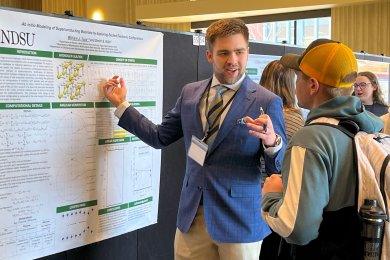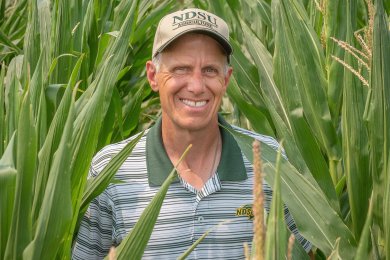Larry Reynolds, University Distinguished Professor of animal sciences, and colleagues from around the country, recently published "Importance of Animals in Agricultural Sustainability and Food Security" in the Journal of Nutrition.
According to the article, the world’s population is expected to grow to 9.5 billion by 2050 and to 11 billion by 2100, compared with its current 7.2 billion. Most arable land worldwide is in use for agricultural production, and fresh water and available energy are limiting. Thus, production of food will need a continued increase in efficiency that has occurred in the last century, sometimes referred to as the "Green Revolution."
The authors point out that food security already is a major problem. Worldwide, nearly 1 billion people, including 20 million children, suffer from severe malnutrition, which is one of the major causes of death and disability. Food insecurity is not just a problem in developing countries – in the U.S. for example, nearly 15 percent of households are food insecure. Because of their nutritional needs, food insecurity especially affects children and pregnant women.
The authors argue that animal products, such as meat, milk, eggs, fish and other seafood, will play an important role in achieving food security and agricultural sustainability from several standpoints:
- Animal products are an important source of high-quality, balanced and highly bioavailable protein as well as micronutrients such as iron, zinc and vitamins B-12 and A, all of which are deficient in much of the world’s population.
- Because they are recognized as high-quality foods, the global demand for animal products will continue to increase as population and affluence increase.
- Farm animals contribute additional resources such as manure for fertilizer, on-farm power, and other by-products; they also provide for economic diversification and risk distribution, especially for smallholders, who comprise most of the world’s farmers.
- Ruminants, which include buffalo, cattle, goats and sheep, are able to efficiently convert forages from grasslands into high-quality animal products, and in addition grazing can promote health and biodiversity of grasslands if managed appropriately. The latter is especially important as grasslands cover more than 25 percent of Earth’s land surface but comprise primarily marginal or non-arable lands.
The writers also point out that sustainable farm animal production will require a more complete understanding of their impact on the environment as well as the specific roles of animal products in human diets. In this regard, recent reports from the U.S. National Research Council and the Office of Disease Prevention and Health Promotion, U.S. Department of Health and Human Services argue strongly for a renewed focus on research concerning these controversial but critical issues.
As a student-focused, land-grant, research university, we serve our citizens.


